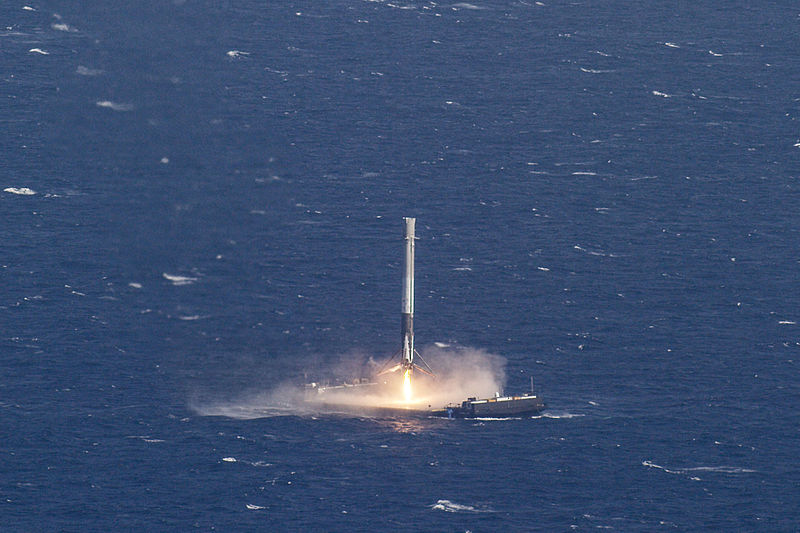One of the major costs of space exploration and exploitation is the one-time use of launch vehicles. Although some first stage boosters have been recovered from ocean landings and towed back to land for dismantling, this does not solve the problem. Popular depictions of space travel have shown rocket ships landing vertically for decades but it turns out that this is very difficult and, up until recently, has not been achieved although rockets have been carrying payloads into orbit for almost sixty years.
SpaceX is the aerospace company founded by Elon Musk. It has been delivering cargo to the International Space Station in the past few years with its Falcon 9 launch vehicle. Recently the company has been working on landing a Falcon 9 first stage both on dry land and on an unmanned barge at sea.
The landing barge has a platform that measures three hundred feet by one hundred and seventy feet. There are four diesel engines that can pivot the barge horizontally that provides full three hundred and sixty degrees of control and great stability. The barge can maintain position to within ten feet. The barge is capable of autonomous maneuvering and navigation with GPS but can also be controlled from a nearby manned support vessel. There are sensors and cameras on the barge so technicians can monitor the landing attempts. After a successful landing, the Falcon 9 first stage is welded to the deck of the barge and stabilized with reinforcing struts for the trip back to port. There is a barge for use in the Atlantic Ocean that docks at Port of Jackson or Port Canaveral and a Pacific barge that docks at the Port of Los Angeles.
In January and April of last year, SpaceX failed to land a Falcon 9 first stage successfully on the barge. In one case, the Falcon 9 first stage came in too fast. In another case, the Falcon 9 first stage almost landed safely but then one of the four landing struts collapsed and the rocket tipped over and exploded. In June of last year, a SpaceX Falcon 9 exploded on a cargo run to the ISS and launches were halted for six months.
Blue Origin, the aerospace company founded by Jeff Bezos was able to land successfully land part of their New Shepard suborbital launch vehicle a couple of times recently. The first such successful landing was carried out in November of 2015. The New Shepard vehicle is small, lighter and travels at a much lower velocity than the Falcon 9 first stage. The vertical landing of a Falcon 9 first stage is much more difficult. In December of 2015, Space X successfully landed a Falcon 9 first stage on dry land at Cape Canaveral.
On April 8 of 2016, a Falcon 9 first stage came down out of the sky and landed on the drone barge successfully. This successful landing demonstrated that SpaceX is capable of landing the Falcon 9 on dry land and on a barge at sea. The first stage of a Falcon 9 costs sixty million dollars. It only costs two hundred thousand dollars for fuel the first stage. Of course, there will be refitting costs above and beyond the fuel costs in order to ready a Falcon 9 first stage for reuse but the reduction in cost due to reuse should be at least one tenth of the current cost. In time, vertical landings will be normal and the cost of launching payloads to orbit will drop significantly as launch vehicles can be recovered and reused instead of being thrown away.
SpaceX Falcon 9 first stage landing successfully on barge at sea:
